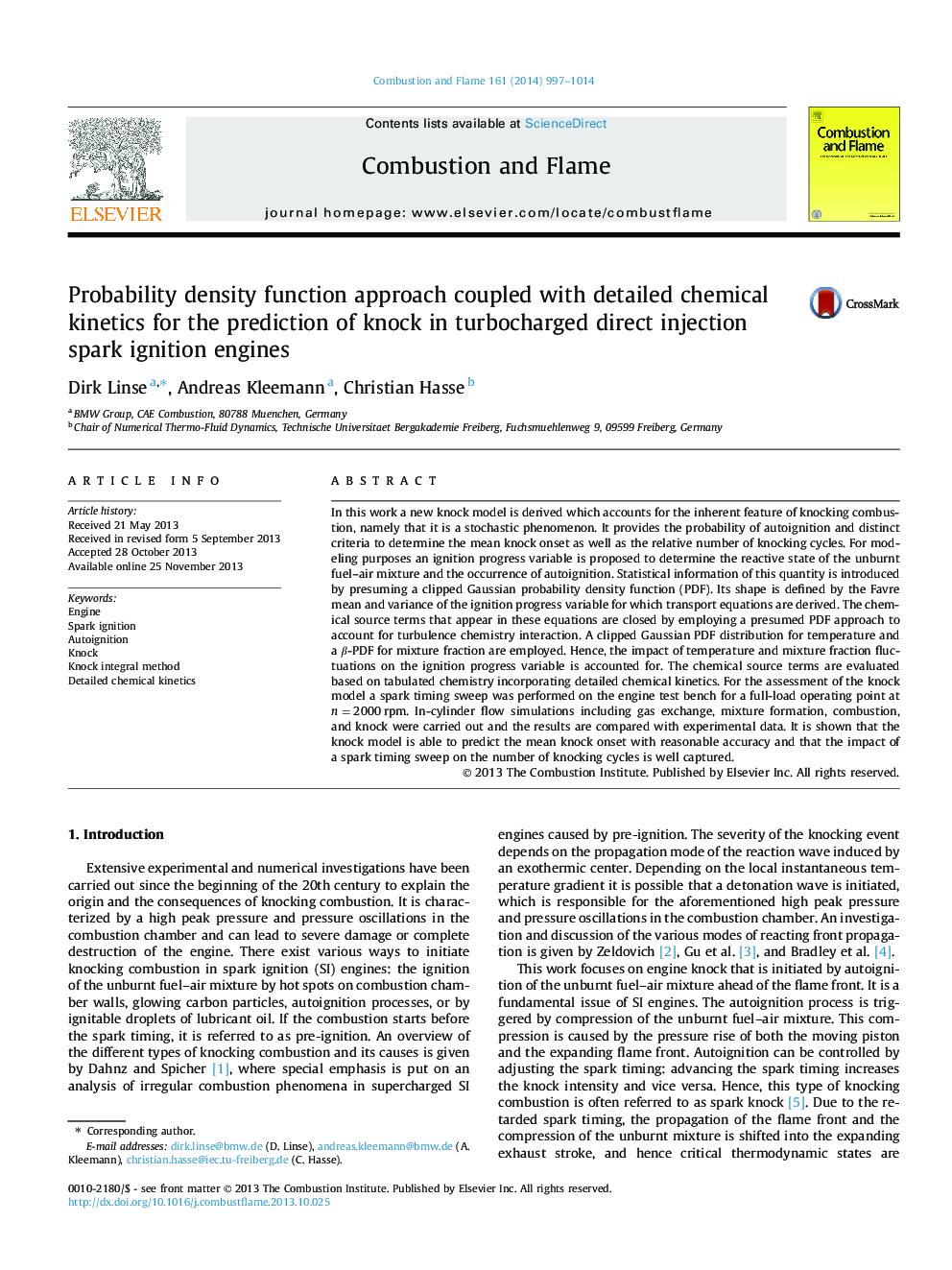| Article ID | Journal | Published Year | Pages | File Type |
|---|---|---|---|---|
| 168710 | Combustion and Flame | 2014 | 18 Pages |
In this work a new knock model is derived which accounts for the inherent feature of knocking combustion, namely that it is a stochastic phenomenon. It provides the probability of autoignition and distinct criteria to determine the mean knock onset as well as the relative number of knocking cycles. For modeling purposes an ignition progress variable is proposed to determine the reactive state of the unburnt fuel–air mixture and the occurrence of autoignition. Statistical information of this quantity is introduced by presuming a clipped Gaussian probability density function (PDF). Its shape is defined by the Favre mean and variance of the ignition progress variable for which transport equations are derived. The chemical source terms that appear in these equations are closed by employing a presumed PDF approach to account for turbulence chemistry interaction. A clipped Gaussian PDF distribution for temperature and a ββ-PDF for mixture fraction are employed. Hence, the impact of temperature and mixture fraction fluctuations on the ignition progress variable is accounted for. The chemical source terms are evaluated based on tabulated chemistry incorporating detailed chemical kinetics. For the assessment of the knock model a spark timing sweep was performed on the engine test bench for a full-load operating point at n=2000n=2000 rpm. In-cylinder flow simulations including gas exchange, mixture formation, combustion, and knock were carried out and the results are compared with experimental data. It is shown that the knock model is able to predict the mean knock onset with reasonable accuracy and that the impact of a spark timing sweep on the number of knocking cycles is well captured.
